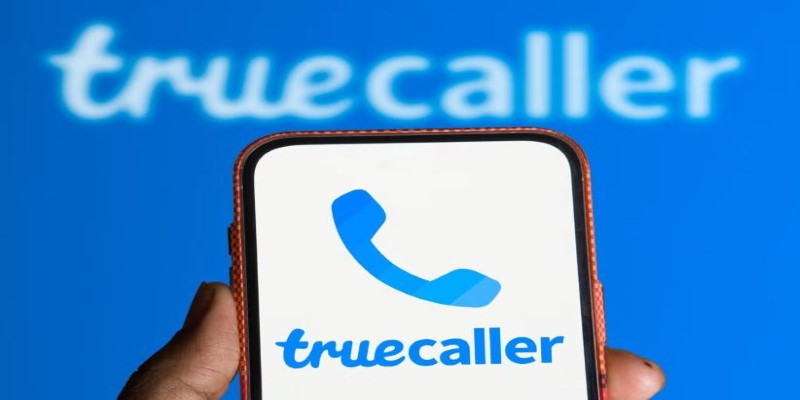Spam calls have become part of our everyday lives, whether it’s a telemarketer pitching something you didn’t ask for or a scammer trying to trick you into revealing personal information. While many people have developed a habit of ignoring unknown numbers, it's not always easy to distinguish between a genuine call and a nuisance. That’s where Truecaller steps in with a new AI-based spam blocking feature that does more than just label numbers — it takes action.
What Makes This AI Spam Blocker Different?
Until now, Truecaller has mostly focused on caller ID and community-driven tagging of spam numbers. It worked well enough, but it still relied on users to manually report or block certain callers. That method has limits. Spam tactics keep changing, and not everyone takes the time to report suspicious numbers. The new AI-based spam blocking feature changes the way the app handles these intrusions.
Instead of waiting for user input, the AI scans the behavior patterns of incoming calls in real-time. It doesn't just look at a number's history — it evaluates how long the call lasts, how many people reject it, the frequency of calls, and the time of day it comes in. If something looks off, the AI knows.
There's no longer a need to second-guess every unfamiliar number. The AI runs in the background, assessing risk in real time. If it detects suspicious behavior, the call gets blocked silently — no action is needed on your part.
How the Feature Works
This isn’t a broad, one-size-fits-all blocker. It adjusts based on your preferences and call patterns. When you install the app and enable AI spam blocking, it starts observing how you interact with calls. Over time, it gets better at understanding which ones to allow through and which ones to filter out. Here’s a closer look at how the mechanism works:
Behavior-based Scanning

The AI pays attention to repeat calling patterns from specific numbers, especially when these numbers aren’t saved in your contact list. If a number is calling multiple users across different regions and getting ignored or rejected each time, that’s a red flag.
Context-aware Filtering
It also looks at the timing and duration of calls. For example, if a number repeatedly tries calling during odd hours or ends the call a few seconds after it rings once, it's likely a bot or a scam attempt. AI uses that behavior to build a profile and decide what to do next.
Community Insights Still Matter
Even though the system is automated, community feedback still plays a role. If a lot of users flag a number, the AI takes that seriously. The feature uses that crowd-sourced input to update its models, helping others avoid similar calls.
Silent Blocking
You won’t get notified for every blocked call — and that’s the point. The goal is to keep interruptions out of sight. If the AI suspects the call is spam, your phone stays quiet, and you’ll only see the blocked number in your call log if you choose to check it.
Setting This Feature Up
Truecaller has made the process of enabling AI spam blocking fairly easy. Here’s how to set it up:
Make Sure You Have the Latest Version
Head to your app store and update Truecaller to the latest version. This feature is not available in older versions, so keeping the app current is important.
Open the App and Go to Settings
Once the app is updated, open it and tap on the menu or profile icon. Navigate to ‘Settings’ and then to the ‘Spam Blocking’ section.
Turn On AI Spam Blocking
Inside the spam settings, you'll see an option to enable AI spam blocking. Toggle it on. If you want, you can choose between different levels of filtering — standard or aggressive. Aggressive mode is best if you receive too many spam calls and don't mind missing unknown numbers that might be legit.
Allow Permissions
The app will ask for permission to manage your call logs and handle call filtering. You’ll need to allow this for the feature to work properly.
Monitor and Adjust
After enabling, give it a few days. Check your blocked list occasionally and see if the AI made the right choices. If a genuine number gets blocked, you can whitelist it to avoid future issues.
Where It’s Available and Who Can Use It
For now, the feature is rolling out gradually. Truecaller has started with selected countries where spam call volume is unusually high. If you live in India, Brazil, or Nigeria, chances are the feature is already available or will be soon. Users in North America and parts of Europe might have to wait a bit longer, but the global rollout is expected to happen over the next few months.

Truecaller has also made this feature available to both free and premium users, though some advanced customization options are locked behind a subscription. Still, the core blocking ability is being offered at no extra cost, which is a thoughtful move considering how widespread the spam problem has become.
What It Means for Users
One of the biggest frustrations with phone calls today is not knowing whether you should answer. You pause, look at the screen, hesitate — and by the time you decide, it’s either gone or you end up talking to a robot. This feature cuts out that hesitation.
Unknown numbers no longer have to be a guessing game. Important calls still reach you, while questionable ones are filtered out without disruption. That small shift makes a big difference — your phone starts to feel more helpful and less stressful. There’s also a sense of control that comes with it. You’re not just reacting to spam calls — your phone is actively working to stop them. That gives you time and headspace back.
Conclusion
Spam calls aren’t just annoying — they chip away at time, attention, and sometimes safety. Truecaller’s AI isn’t just labeling bad numbers anymore. It’s actively building a protective layer that evolves with new threats and blocks them quietly in the background. The introduction of this feature is less about adding something new and more about fixing what’s been broken for a long time: peace of mind when your phone rings.











